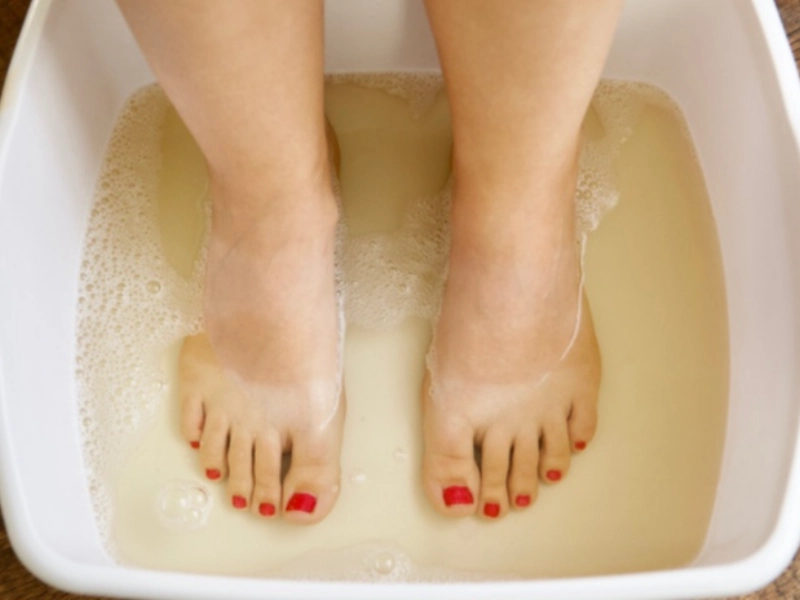This Simple Vinegar Foot Soak Will Transform Your Feet
3. Step-by-Step Guide to the Perfect Vinegar Foot Soak

Begin by gathering your materials. You'll need a large basin or foot bath, warm water, vinegar (apple cider vinegar is often preferred, but white vinegar works effectively too), a towel, and optionally, a few drops of essential oils for additional aromatherapy benefits.
Prepare your foot bath by filling the basin with warm water. Avoid using hot water, as it can dehydrate your skin. The water should feel pleasantly warm to the touch. Use sufficient water to cover your feet up to the ankles.
Next, add vinegar to the water. A standard ratio is one part vinegar to two parts water, but you can modify this based on your skin's sensitivity. If you're new to vinegar foot soaks, begin with a more diluted solution and gradually increase the concentration in future soaks.
If you choose to incorporate essential oils, now is the appropriate time to add them. A few drops of lavender, peppermint, or tea tree oil can enhance the antibacterial properties of your foot soak while providing a pleasant aroma. However, if you have sensitive skin, use caution with essential oils and always dilute them properly.
Before soaking, it's advisable to thoroughly cleanse your feet with mild soap and water. This ensures that your foot bath isn't introducing additional dirt or bacteria.
Now, gently lower your feet into the prepared solution and soak for 15 to 20 minutes. Use this time to relax—read a book, listen to soothing music, or practice deep breathing exercises.
During the soak, you may experience a slight tingling sensation, which is normal and indicates that the vinegar is working. However, if you experience discomfort or irritation, remove your feet immediately and rinse them with clean water.
After soaking, remove your feet from the basin and pat them dry with a clean towel. Be sure to dry completely, especially between your toes, as excess moisture can encourage fungal growth.
To maximize the benefits of your vinegar foot soak, consider gently exfoliating rough areas with a pumice stone or foot file while your skin remains soft. Be gentle, especially if you have sensitive skin or existing foot conditions.
Finally, apply a moisturizing foot cream or natural oil, such as coconut oil, to seal in hydration. This step is particularly important, as vinegar soaks can be drying to the skin.
For optimal results, aim to perform a vinegar foot soak one to two times per week. However, if you have any existing foot conditions or concerns, always consult a healthcare professional before starting a new foot care routine.








